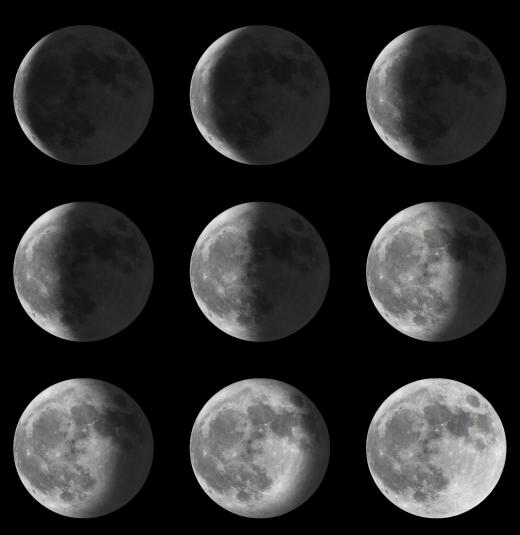How did the Moon Form?
 Michael Anissimov
Michael Anissimov
The dominant theory explaining the creation of the Moon is the giant impact hypothesis, which argues that 4.533 billion years ago (only about 70 million years after the formation of the Earth itself), a Mars-sized body named Theia collided catastrophically with the Earth, throwing many trillions of tons of magma and rock into Earth's orbit, which coalesced and cooled to become the Moon. This theory is not perfect, however — it predicts that the Earth had a magma ocean at one time, for which no evidence can be found.
Early in the solar system's history, when the planets were just forming, the solar system was a more crowded place. Orbits were still stabilizing, and many of the early asteroids degraded into unstable orbits that fell into the Sun and Jupiter or got ejected into the far reaches of the solar system. One gravitationally stable point for the coalescence of space rock, the L5 point, had a special harmony with the Earth. Located within Earth's orbit but occupying a different position than the Earth itself, L5 is the present-day home of the Trojan asteroids.

As material coalesced at L5, it is eventually thought to have exceeded the mass of Mars, which caused its path to become unstable, oscillating along the length of Earth's orbit rather than staying put at L5. Soon enough, this oscillation brought it right into contact with the Earth, in an event called the big whack or the big splash. Tons of material was ejected, and after 1 to 100 years this material coalesced to become the Moon, which was initially covered with magma oceans. Evidence for these oceans was found by the Apollo astronauts.

The Moon is peculiar for orbiting the Earth because of its large relative size. Venus, a planet of similar size to Earth, has no Moons despite its similar mass. Mars has only a few, which are very tiny, with radii less than 20 km. So Earth's astonishing Moon, among the largest of the solar system, requires a special explanation, given by the giant impact hypothesis. Observations that the Moon's composition is similar to that of the Earth's crust, but not our mantle, led scientists to formulate the giant impact hypothesis.
AS FEATURED ON:
AS FEATURED ON:















Discussion Comments
The moon has three elements that are not found on the earth:
Armalcolite, Tranquillityite, and Pyroxferroite.
Your theory is not valid. I would say that ShadowGenius has the best answer. The moon was created. Period. Since you fellows are wise, I suppose you can figure that out. "
@fify-- There are actually many theories about how the moon formed, but none of them explain it perfectly.
For example, one theory says that the moon and earth formed really close to one another and that's why they're so similar. Another says that they formed separately but the moon ended up in earth's orbit.
None of these really explain how the moon formed. The moon is too unique to be explained by any of these.
If the moon formed as a result of a Theia colliding with the earth, wouldn't it also be composed of materials from Theia? Why is the moon only composed of materials from earth?
There is an alternative hypothesis for the formation of the moon than the one explained here. My instructor talked about it in class this week. It's called fission hypothesis and it basically says that the origin of the earth and the moon are the same.
Both the moon and earth were a single piece of molten rock that was spinning in space. This spinning lead to a nuclear explosion that caused what is now the moon to separate from what would be the earth.
I don't know if I believe this theory but it seems to be as logical as the giant impact hypothesis.
well, it's not made from sand, bionerd, because when neil armstrong went to the moon, they brought back rocks from the moon and they studied it and it had parts of the earth's crust!
@BioNerd
If the moon did indeed form from the earth, it formed at a time before much of the earth's materials had fully formed, and everything was molten magma. The moon did not develop the environmental factors necessary to produce all of the earth's elements.
If the moon formed from the matter of the earth, how come it is all sand?
It is stunning to think that the earth is the perfect size for life. If it were larger, and the moon had not separated, so many things would be thrown out of balance, one of which is gravity. We would weigh much more than we do because the earth's gravity would be stronger. Also, the moon was made to be a perfect size to match the size of the sun from our point of view.
Post your comments